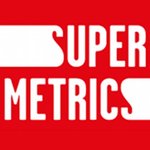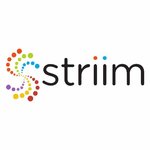Top Data Extraction Softwares
Data Extraction software plays a crucial role in today's data-driven world. It allows businesses to effectively gather information from diverse sources including documents, websites, and databases. This software is designed to streamline the process of collecting, organizing, and converting data into a usable format. It supports companies in making informed decisions by providing accurate and time... Read More
131 companies found
Product Description
UiPath is a software solution that helps businesses automate their repetitive tasks so employees can focus on more important work. Imagine you're running a business and there's a ton of manual, time-consuming tasks that your team does every day—like processing invoices, entering data across multiple systems, or generating reports. UiPath steps in to take care of these tasks so your team doesn't ha... Read More
Users
- • No Data
Industries
- • No Data
Market Segment
- • No Data
HelpSystems
Product Description
HelpSystems is a company that provides software solutions designed to make IT operations simpler and more efficient. We understand that managing IT environments can be complex and time-consuming, especially for growing businesses. That’s why we offer a suite of tools that help automate and secure your everyday tasks. Our software focuses on areas that matter most to businesses: automation, cybers... Read More
Users
- • No Data
Industries
- • No Data
Market Segment
- • No Data
HighRadius
Product Description
HighRadius is a company that offers a suite of software solutions for businesses looking to streamline their finance and accounts receivable processes. Essentially, HighRadius helps firms improve the way they manage their cash flow and automate the more tedious aspects of financial operations. If you're running a business, you know how critical it is to get paid on time and track every penny. Hig... Read More
Users
- • No Data
Industries
- • No Data
Market Segment
- • No Data
Product Description
Fivetran is a company that makes it easy for businesses to move their data without the headaches. Think of it as a bridge that connects all your data sources – be it your sales data, marketing stats, or customer info – and places them in one location where you can easily use them. The beauty of Fivetran lies in its simplicity. You don't need to be a tech wizard to figure it out. Once set up, it a... Read More
Users
- • No Data
Industries
- • No Data
Market Segment
- • No Data
Product Description
Matillion is a software company that provides cloud-based data integration tools designed to help businesses quickly and effectively draw insights from their data. Making data management more manageable, Matillion enables users to transform raw data into a more accessible and useful format, ensuring you can make informed business decisions. At its core, Matillion simplifies the complex process of... Read More
Users
- • No Data
Industries
- • No Data
Market Segment
- • No Data
Supermetrics
Product Description
Supermetrics makes it easy for businesses to gather and analyze their marketing data. Imagine being able to pull all your data from various marketing platforms like Google Ads, Facebook, and HubSpot into one place without the hassle of manual work. That's what Supermetrics does. It takes the complexity out of collecting your marketing data by automating this process, making it easier for you to fo... Read More
Users
- • No Data
Industries
- • No Data
Market Segment
- • No Data
Product Description
Cognism is a sales intelligence platform designed to help businesses find and connect with potential customers. As a sales and marketing tool, it aims to improve how teams gather and use data for prospecting. With Cognism, companies can access a rich database of contact information, which includes emails and phone numbers, to boost outreach efforts. One of the main features of Cognism is its abil... Read More
Users
- • No Data
Industries
- • No Data
Market Segment
- • No Data
Product Description
Striim makes it easier for businesses to handle, analyze, and use their data in real-time. In a nutshell, Striim helps companies gather data from various sources and process it quickly, so they can make informed decisions without delay. It's particularly helpful for those who need immediate insights for their operations, like monitoring sales trends, tracking customer behavior, or managing supply ... Read More
Users
- • No Data
Industries
- • No Data
Market Segment
- • No Data
PromptCloud
Product Description
PromptCloud is built to simplify how businesses collect and use web data. With a focus on providing top-notch web scraping services, it helps companies pull valuable insights from the internet easily and efficiently. Whether it's market research, price monitoring, or competitor analysis, PromptCloud gathers the information you need from websites quickly and accurately. Using PromptCloud, business... Read More
Users
- • No Data
Industries
- • No Data
Market Segment
- • No Data
Product Description
Mozenda is a user-friendly software designed to help businesses easily gather and manage web data. Imagine needing to collect specific information from various websites for market research, competition analysis, or monitoring product prices. Instead of spending countless hours manually copying and pasting data, Mozenda automates this entire process, saving you time and effort. With Mozenda, you c... Read More
Users
- • No Data
Industries
- • No Data
Market Segment
- • No Data
What is Data Extraction Software and How Does It Work?
Definition
Data Extraction software is a type of application designed to extract vast amounts of data from various sources. These sources can include databases, websites, PDFs, spreadsheets, or other complex data repositories. Data Extraction software simplifies the process of collecting and compiling scattered information, transforming disparate data into a usable format. It is essential in converting unstructured data into structured data sets for analysis and further processing.
Functionality
The primary functionality of Data Extraction software includes identifying, retrieving, and creating structured data from numerous formats and locations. The software automates the extraction process, reducing the time and effort required for manual data collection. This is particularly beneficial for organizations that need to handle large volumes of data quickly and efficiently.
How It Works
Data Identification
Data Extraction software uses algorithms to identify relevant information within a data source. It searches for specific data patterns or keywords, depending on the user's requirements. Algorithms can be customized to improve the precision of data identification.
Data Retrieval
Once the software identifies the relevant data, it retrieves or "extracts" the information from the original sources. The retrieval process might involve connecting to databases, reading documents, or scraping website content. Data Extraction software can interface with different data sources through APIs, database connectors, or web crawling mechanisms.
Data Cleaning
After retrieval, the raw data often requires cleaning. Data Extraction software typically includes cleaning tools to remove duplicates, correct errors, and standardize formats. Ensuring data quality is crucial for its subsequent use in analysis or reporting.
Data Transformation
The extracted and cleaned data may need transformation to meet the desired format or structure. The software often includes capabilities to convert data into various formats, such as CSV, Excel, or JSON. Data transformation is crucial for integrating data into existing systems or for analytical purposes.
Automation and Scheduling
To boost efficiency, Data Extraction software allows for automation. Users can schedule extraction tasks to occur at regular intervals, ensuring data is continuously updated without manual intervention. This scheduling capability helps in maintaining data freshness and relevance.
Security and Compliance
Many organizations must consider security and compliance while handling data. Data Extraction software often includes features to protect data privacy, ensuring compliance with regulations like GDPR or CCPA. These tools may include encryption, access controls, and logging of data extraction activities to monitor for any unauthorized access.
Applications
The software finds applications in various sectors, including finance, marketing, e-commerce, and healthcare. In finance, it gathers transactional data for risk analysis. In marketing, it analyses customer sentiment from social media platforms. For e-commerce, it collates product information from competitors' websites. In healthcare, it extracts patient data for research purposes.
By using Data Extraction software, organizations can access, analyze, and leverage data to gain insights, make informed decisions, and enhance operational efficiency.
How can Data Extraction software benefit businesses?
Streamlined Data Collection
Data Extraction software provides businesses with efficient tools to gather information from websites, documents, databases, and other unstructured sources. By automating this process, companies can save significant time and reduce the risk of errors that occur with manual data entry. This leads to increased productivity as team members can focus on higher-value tasks.
Improved Decision-Making
With easy access to relevant data through Data Extraction software, businesses can enhance their decision-making processes. By analyzing the extracted data, companies can gain deeper insights into market trends, customer behaviors, and competitive landscapes. This data-driven approach allows businesses to make informed decisions that align with their objectives and market conditions.
Enhanced Competitive Analysis
Data Extraction software helps businesses continuously monitor competitor activities by gathering information from various sources. This includes scraping competitor websites, pricing strategies, customer feedback, and product offerings. By staying informed about competitor actions and market changes, companies can proactively adapt their strategies and maintain a competitive edge.
Cost Reduction
By automating data extraction tasks, businesses can reduce the need for manual labor, thereby cutting operational costs. Furthermore, by ensuring the accuracy and consistency of collected data, companies can minimize costly mistakes that may arise from inaccurate information.
Scalability
Data Extraction software provides the scalability needed to handle large volumes of data. Whether a business needs to extract data from a few sources or thousands, this software can expand and adapt to accommodate growing data demands. Scalability ensures that businesses can continue to leverage data extraction as they grow without being hindered by limitations.
Data Integration
This software often integrates seamlessly with other business systems and applications, enabling easy transfer and management of data across platforms. Data Extraction software facilitates the aggregation and synchronization of data into a single location, providing a unified view across various business functions, such as sales, marketing, and operations.
Accurate Data Analysis
By providing reliable and accurate data, Data Extraction software ensures that businesses have access to high-quality inputs for their analysis processes. When organizations utilize precise data, they can focus on accurate forecasting, performance measurement, and strategic planning.
Time-Sensitive Information
In rapidly changing fields, acquiring time-sensitive information is crucial. Data Extraction software enables businesses to scrape and collect real-time data that can be immediately implemented into actionable insights. This is particularly significant in industries such as finance, e-commerce, and digital marketing, where timely information can impact critical decisions.
By embracing these benefits, businesses can implement Data Extraction software for streamlined operations, adapt to consumer demands, outpace competitors, and sustain growth through informed strategies and cost-effective practices.
What are the key features to look for in Data Extraction software?
When evaluating Data Extraction software, several key features are important to consider. These features ensure that the software can efficiently and effectively manage data extraction processes across various data sources and formats.
1. Data Source Compatibility
A fundamental feature of any Data Extraction software is its capability to connect and extract data from multiple sources. This includes databases, cloud services, websites, and various file types like PDFs, Excel, and CSVs. The software should support integration with a wide array of systems to cater to diverse business environments.
2. Automation and Scheduling
Automation capabilities are crucial for minimizing manual efforts and ensuring data consistency. Look for software that offers scheduling features to automate data extraction at set intervals. This reduces the need for manual intervention and ensures that data is always up-to-date, an essential factor for businesses relying on real-time data.
3. Data Transformation
Often, extracted data requires transformation or normalization before further analysis or use. Data Extraction software should offer built-in tools for data transformation, such as cleaning, reformatting, and enriching data. This aids in converting data into a usable form that aligns with business needs.
4. Data Format Flexibility
Data Extraction software must handle various data formats seamlessly. Whether it’s unstructured, semi-structured, or structured data, the software should have robust parsing capabilities. This flexibility ensures users can extract valuable information regardless of the format in which it resides.
5. Scalability and Performance
Scalability is important as businesses grow and data volumes increase. Efficient Data Extraction software should process large datasets without performance degradation. It should also support parallel processing to improve data extraction speed and manage high volumes effectively.
6. User-Friendly Interface
Ease of use is a significant factor during software selection. A user-friendly interface makes it simpler for non-technical users to navigate the software and perform data extraction tasks without extensive training. This feature enhances productivity by enabling quick access to functionalities.
7. Data Security and Compliance
Given the sensitive nature of data, security, and compliance cannot be overlooked. Data Extraction software should employ robust security measures, such as encryption and access controls, to protect data. Additionally, compliance with relevant data protection regulations, such as GDPR or HIPAA, is essential to mitigate legal risks.
8. Error Handling and Monitoring
Effective error handling and monitoring capabilities can significantly impact the success of data extraction operations. Look for software that provides comprehensive logging and alerting mechanisms. This ensures that any issues are promptly detected and addressed, maintaining the integrity of the data extraction process.
9. Customization and Extensibility
The flexibility to tailor extraction processes according to specific business needs is a valuable feature. Consider software with high customization options and extensibility, allowing users to build custom scripts or workflows. This adaptability ensures the software can evolve alongside changing business requirements.
10. Customer Support and Documentation
Lastly, robust customer support and explicit documentation can greatly influence the usability and overall experience with Data Extraction software. Comprehensive documentation enables users to solve issues or optimize usage, while responsive customer support provides necessary assistance during challenges.
In summary, focusing on these key features will help organizations find Data Extraction software that meets their data management needs, facilitates effective data extraction, and enhances overall productivity.
How does Data Extraction software ensure data accuracy and consistency?
Data Validation Techniques
Data Extraction software employs data validation techniques to ensure that data collected from various sources meets predefined criteria for accuracy and consistency. It involves the use of rules or algorithms that check data integrity before it is processed or stored. These rules might include checks for data types, ranges of expected values, and specific patterns or formats necessary for the data to be considered valid.
Automated Data Cleaning
Automated data cleaning is a critical function of Data Extraction software. It helps identify and rectify errors or inconsistencies found within the data set. This process can involve removing duplicate records, correcting misspellings, filling in missing values, and transforming data into a uniform format. By automating these tasks, the software minimizes human error and ensures data remains accurate over time.
Source Consistency
Ensuring source consistency is integral to maintaining data accuracy. Data Extraction software connects to various data sources, such as databases, files, and web services, ensuring that the data extracted is consistently formatted and structured. The software might employ protocols and APIs to regularly update and synchronize data from these sources, deciding against variations that could introduce inconsistencies.
Duplicate Detection
Duplicate records can compromise data quality. Data Extraction software often includes mechanisms to identify and remove duplicates in the data set. This feature not only ensures accuracy but also optimizes storage and processing efficiency by maintaining a clean data repository.
Error Detection and Reporting
Data Extraction software often contains error detection and reporting functionalities. These capabilities enable the system to flag any irregularities or anomalies in the extracted data. Error reports generated can be used by data analysts to further investigate and ensure corrective actions are taken, thus maintaining the consistency and integrity of the data.
Real-time Data Processing
Real-time data processing of data can enhance the accuracy and consistency of the extracted data. When Data Extraction software processes data in real time, it minimizes latency and lag between data capture and data use. This immediacy prevents discrepancies arising from outdated information, providing users with the most current data available.
Consistent Formatting
Ensuring consistent formatting across extracted data sets is vital. Data Extraction software typically applies standard formatting rules during the extraction process, transforming data points into a consistent, coherent format. Consistent formatting facilitates easier data analysis and integration with other systems, maintaining overall data integrity.
Auditing and Logging
Auditing and logging features are incorporated within Data Extraction software to track data changes and transactions. These features offer a trail of data transformations and access, which can be reviewed for accuracy checks. By providing logs of actions performed on the data, businesses can perform regular audits to ensure ongoing data reliability and accuracy.
What are some common use cases for Data Extraction software?
Automating Data Collection
Data Extraction software facilitates the automation of data collection, reducing manual effort significantly. Many businesses use these tools to gather information from various sources like websites, databases, or documents. This automated approach increases efficiency and accuracy by minimizing human error and speeds up data retrieval processes.
Market Research and Competitive Analysis
Businesses can utilize Data Extraction software to perform market research and competitive analysis. By extracting data from competitors’ websites, financial reports, or related industry publications, companies can identify market trends, compare product offerings, and uncover potential business opportunities, all of which are crucial for strategic planning and decision-making.
Financial Data Aggregation
In finance, Data Extraction software plays a vital role in aggregating financial data from myriad sources like stock exchanges, economic reports, and news outlets. Such aggregation aids in developing insights, crafting financial strategies, and performing comprehensive risk assessments. Financial analysts rely on these tools for accurate data collection to ensure thorough and timely analysis.
Customer Sentiment and Feedback Analysis
By leveraging Data Extraction software, businesses can track and analyze customer reviews, social media interactions, and feedback forms to gauge customer sentiment. This approach helps companies in understanding customer needs and concerns, which in turn informs product development and enhances customer satisfaction initiatives.
Lead Generation and Enrichment
Companies often use Data Extraction software for lead generation by scraping potential customer information from various online platforms. This data is then used for creating targeted marketing strategies, leading to higher conversion rates. Moreover, the software aids in data enrichment by adding relevant details from external databases to existing customer profiles.
Real-Time Alerts and Monitoring
Data Extraction software is instrumental in setting up real-time alerts and monitoring systems. Businesses can configure these tools to extract data that triggers alerts for critical changes or updates. This functionality is essential in industries where time-sensitive decisions, such as stock trading or supply chain management, are crucial.
Integration with Business Intelligence Tools
Data Extraction software often works in tandem with Business Intelligence (BI) tools. By collecting and feeding relevant data into BI platforms, these software solutions enable comprehensive analytics and reporting. This integration supports data-driven decision-making across organizations, enhancing operational efficiency and strategic initiatives.
Research and Academic Purposes
In research and academia, Data Extraction software is used to gather large datasets from public domains or academic databases. Researchers rely on these tools for extracting structured and unstructured data required for conducting studies and experiments, ensuring a broad scope and depth of research.
E-commerce Price Comparison
For e-commerce businesses, Data Extraction software is crucial for price monitoring and comparison. These tools help companies track competitor pricing and adjust their strategies accordingly. By continuously extracting pricing data from different platforms, businesses can maintain competitive pricing strategies and enhance customer satisfaction.
Data Extraction software is indispensable across various domains, facilitating myriad business operations and strategic initiatives. Its versatility and efficiency make it a key component in data-driven environments, underlining its importance in contemporary business landscapes.
How do you choose the right Data Extraction software for your business needs?
Choosing the right Data Extraction software is pivotal to efficiently handling and processing data for your business. Here are some core considerations to guide your decision-making process:
Understand Your Data Sources
Identify all data sources your business interacts with, whether they're websites, databases, APIs, or emails. Data Extraction software should be compatible with all these sources to ensure seamless data collection. Verify if the software supports structured and unstructured data extraction, as business needs often entail both.
Scalability and Flexibility
Evaluate your business's current and future data needs. Robust Data Extraction software should scale with your operations, accommodating growing data volumes without hampering performance. Flexibility in extracting varied data formats is equally important to adapt to evolving data landscapes.
Ease of Use and Implementation
Consider the user interface and ease of implementation. Intuitive Data Extraction software reduces training time and encourages quicker adoption across your team. Opt for software that requires minimal technical expertise, enabling users to set up and manage extraction processes efficiently.
Integration Capabilities
Ensure that Data Extraction software seamlessly integrates with your existing software stack, such as CRM, ERP, or data analytics tools. Integration smoothens data flow across platforms, reducing isolated data silos, and enhancing decision-making capabilities.
Data Management and Security
Prioritize security features. Data Extraction software should comply with data protection regulations, offering features like encryption, user access controls, and audit trails. Effective data management capabilities, including deduplication and error checking, are crucial to maintain data integrity.
Customization Options
Consider the extent of customization offered by the software in terms of format, frequency, and data fields. Customizable Data Extraction software tailors to specific business needs, ensuring extracted data aligns with your objectives.
Cost and Return on Investment (ROI)
Analyze the cost vis-à-vis benefits. Besides the purchase or subscription cost, consider the long-term ROI facilitated by improved data-driven decision-making. Look beyond the initial expenditure; assess how the software streamlines operations and drives revenue growth.
Customer Support and Community
Effective technical support and access to a community can be instrumental, particularly during the initial setup or when challenges arise. Evaluate the vendor's customer support offerings, including accessibility, response time, and resource availability like tutorials or forums.
Vendor Reputation and Reviews
Research the vendor's market standing and read user reviews. A well-established reputation often signifies reliability and trust. Real-world user experiences can provide insights into the software's strengths and potential drawbacks.
Trial and Testing
Utilize any available free trials or demos. Hands-on experience with Data Extraction software allows you to assess its functionality and alignment with your requirements. Testing also reveals the user interface quality and ease of use.
By addressing these points, businesses can select Data Extraction software that aligns with their unique data needs and strategic goals, fostering efficiency and competitive advantage.
What are the challenges faced when using Data Extraction software?
Data Quality Issues
One significant challenge with Data Extraction software is ensuring the accuracy and quality of extracted data. Extracted data often requires cleaning and validation to prevent errors that may arise from inaccurate data points or noise. These errors can affect downstream processes and business decisions if not addressed.
Unstructured Data Handling
Data Extraction software sometimes struggles with processing unstructured data, including data from emails, PDFs, images, and other non-tabular formats. Extracting meaningful information from these sources requires sophisticated algorithms capable of interpreting context, making it difficult to achieve consistent results across varied data types.
Scalability Concerns
With increasing data volumes, scalability becomes a concern for many users of Data Extraction software. Performance can degrade significantly as the amount of data to process grows, leading to extended processing times or requiring costly upgrades to existing systems.
Data Source Complexity
Handling data from multiple sources with different formats can pose challenges. Each data source may have unique characteristics, requiring manual intervention or additional software tools for effective data extraction. This complexity can lead to inconsistencies and errors in the extracted data.
Integration Challenges
Integrating Data Extraction software with existing systems can be complex and time-consuming. Many organizations find it hard to seamlessly incorporate these tools into their existing technology stack, which may lead to inefficiencies or incompatibility issues.
Privacy and Security Concerns
Data Extraction software can raise privacy and security concerns, especially when dealing with sensitive or confidential information. Ensuring compliance with data protection regulations and implementing robust security measures is essential to prevent unauthorized access or data breaches.
Cost and Resource Constraints
The implementation and maintenance of Data Extraction software can be cost-prohibitive for some organizations. Not only does the software itself require investment, but skilled personnel may also be necessary to manage and optimize its usage effectively. This can strain budgets and resources, especially for smaller enterprises.
Dynamic Data Sources
Many data sources are dynamic and change over time, posing a challenge for Data Extraction software that relies on predefined schemas or patterns. Keeping extraction processes updated and in sync with changing data formats requires ongoing monitoring and adjustments.
Performance and Speed Limitations
Performance and speed are often critical factors for organizations using Data Extraction software. Inefficient software can lead to bottlenecks, resulting in delays and negatively affecting decision-making processes that rely on timely data insights.
Learning Curve
The complexity of some Data Extraction software tools can present a steep learning curve for users. Understanding how to configure, customize, and operate these tools effectively may require specialized training, which can be a barrier to quick adoption and utilization.
In conclusion, using Data Extraction software involves navigating numerous challenges ranging from data quality, handling unstructured data, and scalability, to dealing with privacy, security issues, and integration complexities. Awareness of these challenges is essential for organizations to make informed decisions regarding the implementation and use of Data Extraction software.









